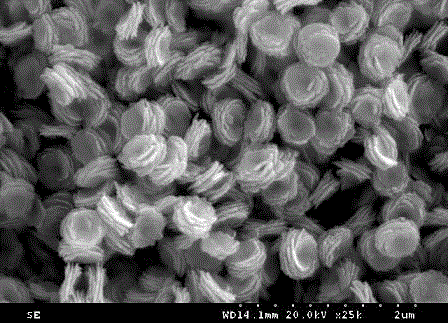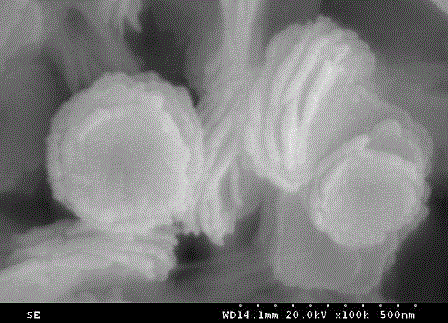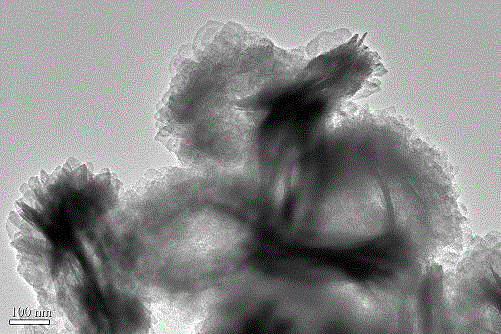Preparation of hierarchical nanostructure Bi2O3/(BiO)2CO3
A hierarchical and composite photocatalytic technology, applied in the direction of catalyst activation/preparation, chemical/physical process, physical/chemical process catalyst, etc., can solve the problems of wide band gap and low light utilization rate, achieve stable performance and simple reaction method , Increase the effect of light utilization
- Summary
- Abstract
- Description
- Claims
- Application Information
AI Technical Summary
Problems solved by technology
Method used
Image
Examples
Embodiment Construction
[0017] 2323 The temperature-programmed hydrothermal synthesis method of composite photocatalytic materials, weighing 99.8% anhydrous sodium carbonate purchased from Tianjin Kaitong Chemical Reagent Co., Ltd. Bismuth citrate, with a mass of 1.6±0.010 g, was purchased from Tianjin Kaitong Chemical Reagent Co., Ltd. 96.0% NaOH, with a mass of 0.2±0.010 g. Measure 60 mL of double distilled water, add 0.46±0.001 g Na 2 CO 3 , to fully dissolve it. Then add 1.6±0.010 g of bismuth citrate and stir for 30 min. After the solution is clarified, add a quantitative NaOH (0.2±0.010 g NaOH, 5 mL deionized water) solution drop by drop, and continue stirring for 0.5 h. The above mixed solution was transferred to a polytetrafluoroethylene reactor, the temperature was programmed to rise at 2 °C / min to 160 °C, and kept under water heat for 24 h. Then, the resulting product was washed three times with deionized water and ethanol. Filter the sediment and put it in a drying box, set the tempe...
PUM
 Login to View More
Login to View More Abstract
Description
Claims
Application Information
 Login to View More
Login to View More - R&D
- Intellectual Property
- Life Sciences
- Materials
- Tech Scout
- Unparalleled Data Quality
- Higher Quality Content
- 60% Fewer Hallucinations
Browse by: Latest US Patents, China's latest patents, Technical Efficacy Thesaurus, Application Domain, Technology Topic, Popular Technical Reports.
© 2025 PatSnap. All rights reserved.Legal|Privacy policy|Modern Slavery Act Transparency Statement|Sitemap|About US| Contact US: help@patsnap.com



